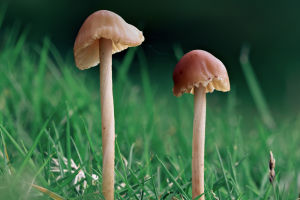Growing Roses at Home
Roses are enduringly captivating blooms that have inspired poets and lovers throughout history.
If you've ever dreamed of having a little piece of that timeless beauty in your own space, you're in luck.
Growing roses at home can indeed be a rewarding endeavor, offering not just stunning visuals but also a sense of accomplishment. Whether you're a novice or an experienced gardener, these tips can help you cultivate healthy, vibrant roses that become the envy of your neighborhood.
The Charms of Roses
Before we delve into the practicalities of growing roses, it's important to immerse ourselves in the reasons behind our fascination with these blooms. Roses aren't just flowers; they're a whole vibe. Their unmatched elegance, the myriad of colors, and the intoxicating fragrance make them the crowning glory of any garden.
But there's more to these beauties than meets the eye. Roses are surprisingly resilient and can thrive for years, making them a gift that keeps on giving. Plus, they're not just for looks; many varieties are edible or can be brewed into teas, offering both beauty and utility.
Choosing Your Champion
The first step in your rose-growing adventure is to choose the right variety. Consider your climate and the amount of space you have. While some roses, like climbers, need room to stretch, others, such as miniatures, are perfect for small spaces or containers. Also, think about maintenance. If you're a "low-effort" gardener, look for disease-resistant varieties.
Setting the Stage
Roses love the spotlight, so pick a spot that gets at least six hours of sunlight daily. They're not fans of competition, either, so ensure the area is clear of grass and weeds. When it comes to soil, roses crave well-draining, rich loam. A pH between 6.0 and 6.5 is just right. If your soil is heavy on clay or sand, amending it with compost and organic matter will make your roses sing with joy.
Planting with exciting
Now, for the fun part—planting! The best times are spring and fall, avoiding the stress of extreme weather. Dig a hole spacious enough for the root system to spread out. If you're planting a bare-root rose, form a small mound in the center of the hole to support the plant. Gently place your rose in the hole, ensuring the graft union (that knobby bit where the stems meet the roots) is just above soil level. Backfill the hole, water generously, and see—you've planted a rose!
TLC: Tender, Loving Care
Roses do have a bit of a tender side when it comes to care. They need regular watering, especially during their first year and in hot, dry conditions. However, avoid getting water on the leaves to prevent fungal diseases. A 2-3 inch layer of mulch will keep the soil moist and cool, reducing the need for frequent watering.
Feeding your roses is also crucial. Opt for a balanced, slow-release fertilizer designed for roses. Apply it in early spring as they break dormancy and again in mid-summer to encourage continuous blooming.
Pruning: Not Just a Snip Here and There
Pruning might sound technical, but it's really about keeping your roses healthy and well-shaped. In early spring, remove any dead or damaged wood and thin out the center to improve air circulation. Cut back about one-third of the previous year's growth to encourage new blooms. Remember, a happy rose is a pruned rose!
Watchful Eye: Pests and Problems
Stay vigilant for signs of trouble, such as discolored leaves or wilting flowers. Common culprits include aphids, spider mites, and fungal diseases like black spot. Early detection and organic solutions, like neem oil or insecticidal soap, can keep these issues at bay.
Growing roses at home is a journey filled with learning, beauty, and, of course, a few thorns along the way. But the joy of watching your roses flourish and bloom is unmatched. So, embrace the process, experiment with different varieties, and most importantly, take time to smell the roses you've lovingly nurtured. Happy gardening!


